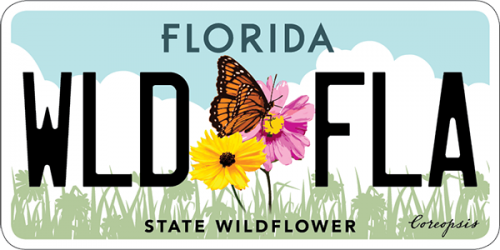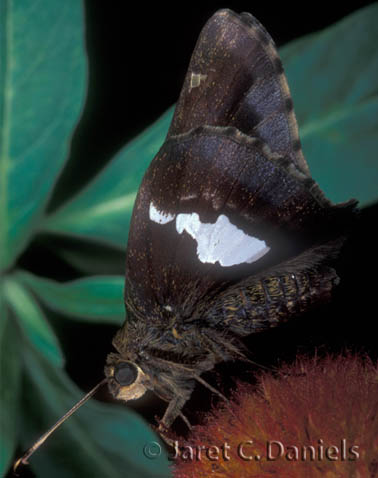- Family name: Hesperiidae/Skippers
- General description: Wings brown, forewing elongated with a band of glassy gold spots. Hindwing with small lobe on lower angle. Ventral hindwing with prominent clear white patch in center.
- Field Marks: Ventral hindwing with prominent clear white patch in center. Body stout.
- Sexes: Appear similar
- Wingspan: 50-67 mm
- Life Cycle: Egg: Green, laid singly on host leaves Mature larva: Yellow with narrow dark transverse bands. Head reddish-brown with two orange-yellow spots along the lower margin. Chrysalis: Brown with darker markings
- Number of Generations: Three or more
- Flight Season: Spring through fall
- Abundance: occasional to common
- Habitat: Fields, swamps, woodland margins, disturbed woody sites, gardens
- Larval Host Plants: Various members of the Pea family(Fabaceae) including Bastard Indigo(Amorpha fruticosa), Black Locust(Robinia pseudoacacia), American Wisteria (Wisteria frutescens), Chinese Wisteria(Wisteria sinensis), American Hogpeanut(Amphicarpaea bracteata)
- Similar Species:
- Additional Information: Range is limited in Idaho and Utah. Adults of this large, robust skipper have a rapid and powerful flight. Typically encountered as isolated individuals. Adults avidly visit available flowers. Larvae construct individual leaf shelters on host.
- Range in Florida
 The Florida Wildflowers & Butterflies projects at the Florida Museum are sponsored in part by the State of Florida and the Florida Wildflower Foundation, Inc.
The Florida Wildflowers & Butterflies projects at the Florida Museum are sponsored in part by the State of Florida and the Florida Wildflower Foundation, Inc.
